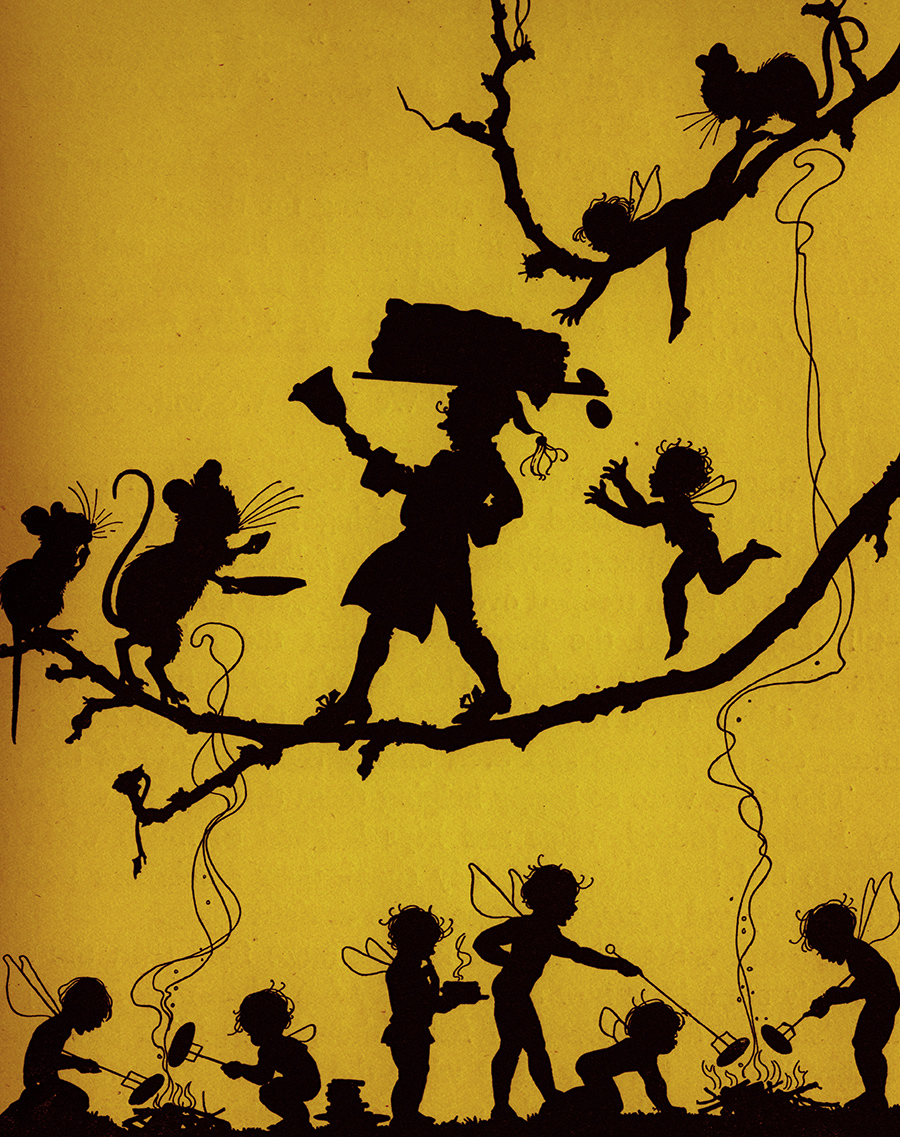6 crazy medical beliefs from days of yore
Got hiccups? Blame elves.

Like current superstitions about the Ebola virus, medical beliefs based in fear or faith have existed throughout history. From fatal diseases to the simple sneeze, here are six of the craziest.
The Black Death was caused by bad air
The symptoms of the Black Death were widely known: fever, vomiting blood, swellings in the groin, neck, and armpits that oozed pus and blood. But the cause of the plague was a mystery.
The Week
Escape your echo chamber. Get the facts behind the news, plus analysis from multiple perspectives.

Sign up for The Week's Free Newsletters
From our morning news briefing to a weekly Good News Newsletter, get the best of The Week delivered directly to your inbox.
From our morning news briefing to a weekly Good News Newsletter, get the best of The Week delivered directly to your inbox.
Some believed it was a punishment from God; others, a "mass conspiracy by the Jews against the Christians." But the most popular belief was that a "great pestilence in the air" brought on by "the conjunction of three planets" had caused the Great Mortality. This miasma theory, the idea that diseases were caused by a noxious atmosphere, was the explanation not just for the bubonic plague but for chlamydia and the London cholera epidemic of the 1850s.
Through DNA analysis we now know that the Black Death was caused by Yersinia pestis, a bacteria carried by Oriental rat fleas. The fleas lived on the black rats that frequented merchant ships traveling from Asia, where the plague is said to have originated, to Europe. Once their rat hosts died, the fleas leapt onto the nearest available host.
Got the hiccups? Blame elves
Hiccups have a number of possible causes — eating too quickly, coughing, even "intense emotions." But you can bet it's probably not elves.
A free daily email with the biggest news stories of the day – and the best features from TheWeek.com
In medieval times, elves were to blame for many of life's unpleasantries. Knots in your hair (also known as elf-locks)? Elves. Nightmares? Elves again. Whatever water-elf disease is? You guessed it.
In Old English, the word for hiccup is ælfsogoða, or "elf hiccup." While we're guessing ælfsogoða involves spasms of the diaphragm, this description makes it seem like a far more serious ailment. Luckily there was a cure: make a "salve" of herbs, write some crosses, and sing a religious verse in Latin.
Sleep paralysis is caused by demons
Sleep paralysis feels terrifying: you can't move, you feel "a strong current" running through your upper body, and you swear someone — or something — is in the room.
Ancient Germanics called such a thing the mare, a spirit that perched on slumberers' chests, causing a feeling of suffocation. (The word nightmare first referred to this oppressive spirit before it came to mean "bad dream.")
Other myths say a hag comes to hunker down on the victim, giving rise to the expression hag-ridden, or afflicted by nightmare or worries. In Turkey, a jinn is responsible for the smothering; in China, the phenomenon is known as ghost oppression; and in Japan, the term translates as "bound by metal."
Modern theory says that sleep paralysis is the result of disrupted REM sleep, and may also be linked to disorders such as narcolepsy, migraines, anxiety disorders, and obstructive sleep apnea. It could also explain paranormal experiences such as alien abduction, ghost sightings, and astral projection.
Sneeze me deadly
To most of us, a sneeze isn't too scary (unless you're a panda), but back in the day, it was full of deadly possibilities.
In the Middle Ages, besides being a possible harbinger of the Black Death, a sneeze was thought to put you at risk for accidentally expelling your spirit. Hence, it became custom to say "God bless you" to keep the spirit within. (There were similar beliefs around yawning but for some reason only sneezes get blessings.)
Other ancient cultures thought sneezing forced out evil spirits that could endanger others, meaning "bless you" was more appropriate for those unlucky enough to be around the sneezer.
A modern day myth says your heart stops in the midst of an achoo. The Library of Congress assures us that this is not the case, that the "changing pressure in your chest due to sneezing also changes your blood flow, which may change the rhythm of your heartbeat," but never does your heart actually stop.
Nor will your eyeballs ever pop out. The blood pressure behind your eyes may increase slightly, but your peepers will stay firmly implanted in your head.
Having tuberculosis meant you were a vampire
In some 19th century families, one relative would succumb to tuberculosis followed soon after by several others. An ancient theory was that the disease was hereditary. But the popular explanation in the 1800s was that the dead relatives were rising from their graves to feed on the living ones.
This belief was so common that restraining bodies or exhuming and burning them post-burial "was a widespread practice in many Western countries until the early 20th century." Another option was a stake through the heart, which sometimes resulted in a corpse seeming "to spring to life and cry out." But these were only the accumulated gases escaping the body.
In 1865, French military doctor Jean-Antoine Villemin showed that TB could be passed between animals and "postulated a specific microorganism as the cause of the disease." In 1882, microbiologist Robert Koch identified the microorganism, which helped to convince the medical world that the disease was contagious and not the handiwork of bloodsuckers.
The case of the wandering womb
Yep, you read that right. The ancient Greeks believed that a woman's womb — that's the uterus to you and me — spontaneously wandered around her abdominal cavity, colliding with other organs and causing headaches, sluggishness, weakness, and vertigo.
By the 1500s, the myth of the wandering womb was replaced with that of the womb as the source of women's "irrationality," and by the 19th century, hysteria over female hysteria was rampant. Cures included hypnosis, "vibrating devices" (you read that right, too), jets of water blasted at the abdomen, and, in extreme cases, hysterectomies.
While female hysteria is no longer a recognized illness, stereotypes around women's moods and their "wombs" still run rampant.
Angela Tung's essays on language and culture have appeared at Mental Floss, Quartz, Salon, The Week, The Weeklings, and Wordnik. Her personal essays have appeared at The Frisky, The Huffington Post, and elsewhere.
-
 Can Mike Johnson keep his job?
Can Mike Johnson keep his job?Today's Big Question GOP women come after the House leader
-
 A postapocalyptic trip to Sin City, a peek inside Taylor Swift’s “Eras” tour, and an explicit hockey romance in December TV
A postapocalyptic trip to Sin City, a peek inside Taylor Swift’s “Eras” tour, and an explicit hockey romance in December TVthe week recommends This month’s new television releases include ‘Fallout,’ ‘Taylor Swift: The End Of An Era’ and ‘Heated Rivalry’
-
 ‘These accounts clearly are designed as a capitalist alternative’
‘These accounts clearly are designed as a capitalist alternative’Instant Opinion Opinion, comment and editorials of the day